Rain gardens are a great way of creating beautiful landscapes while protecting one of our most precious resources. They are water features that celebrate natural processes, and they're constantly changing — growing during storm events and then subsiding. Their varying states nurture a variety of plants and wildlife.
In a pristine environment, rainfall is picked up by plants or absorbed into the ground, where it recharges local streams and groundwater. Rain gardens enhance these natural processes, increasing groundwater infiltration and helping to break down contaminants, keeping them out of local waterways.
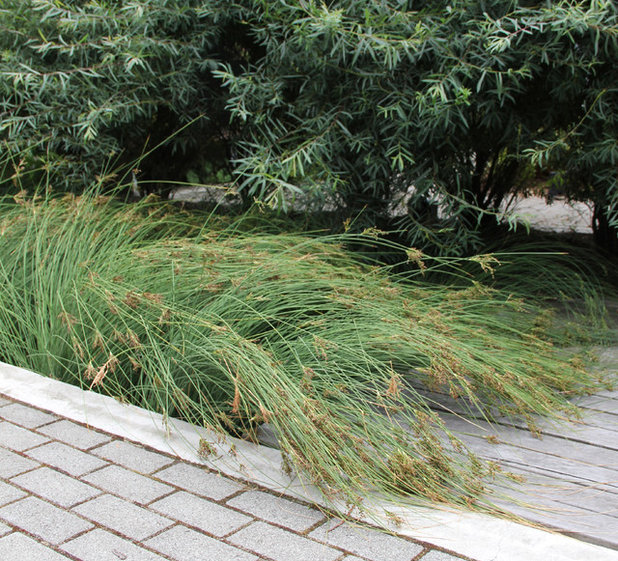
microhouse
What Does a Rain Garden Do? In urban areas, impervious surfaces (like paving and rooftops) prevent rainwater from entering the ground, so it must be collected and discharged. Increased runoff from these surfaces creates excessive peak flows that lead to erosion and water degradation.
This runoff often contains biological contamination, from fertilizer and pet waste to oils from roads and driveways. The cost of conveying and treating this runoff is considerable, which is why an increasing number of public utilities are offering incentives to homeowners who reduce runoff by building rain gardens.
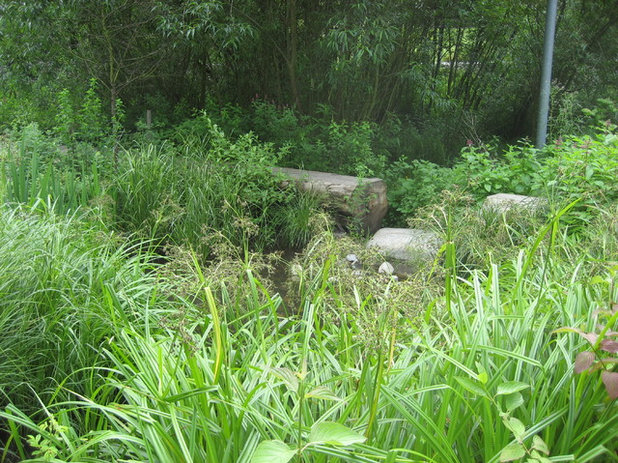
microhouse
Choosing a Location Look for existing low points in your yard at least 10 feet away from property lines and houses, but near the impervious surface that's causing the runoff.
The size of your rain garden will depend on local rainfall, the tributary area and the soil type. Poorly draining soils can be amended with mulch, which functions a bit like a giant sponge, holding water where it can be picked up by plants.
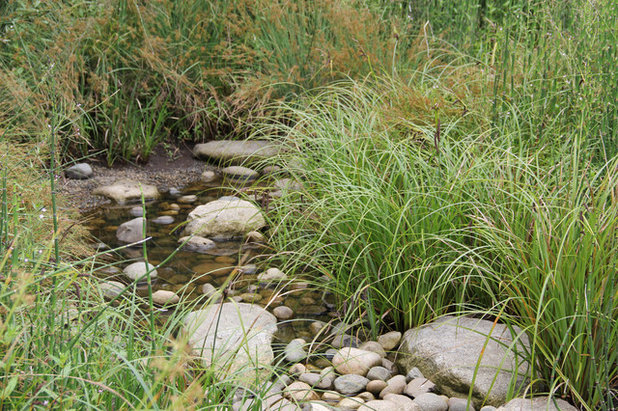
microhouse
Rain gardens fill with water during and after storms. The water percolates into the soil and dissipates through a process called evapotranspiration, a combination of evaporation and the release of moisture from plants.
Still, it is a good idea to plan for water discharge into an area away from buildings. Seasonal pools like this one are a good solution, and they're a valuable habitat for amphibians and other wildlife. These ponds dry up in the summer, so they don't encourage mosquitoes.
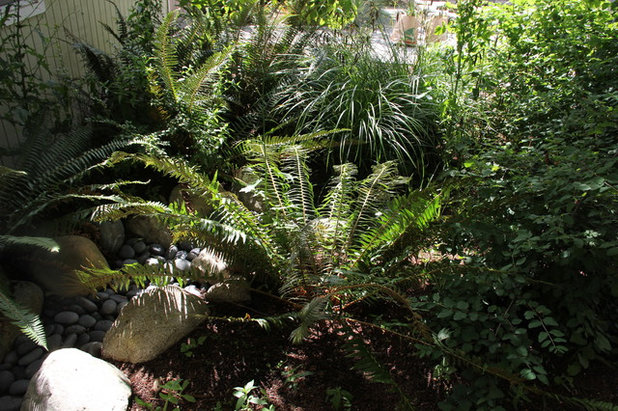
microhouse
Planning Your Garden
Rain gardens come in all sizes. This small rain garden designed by Vinita Sidhu collects the runoff from a garage roof.
Choose a variety of plants to accommodate the different zones within the garden. The lowest points will receive more water and stay wet longer than plants on higher sides.
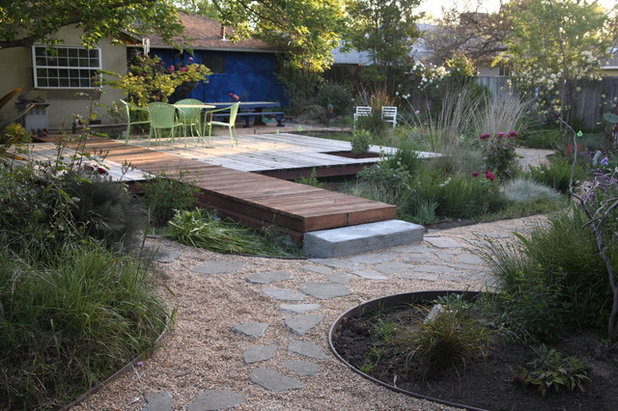
Luciole Design Inc.
Native plants that can tolerate both occasional flooding and dry periods are great choices for rain gardens. Your city and state cooperative extensions are likely to have great resources available to help you design your rain garden. The Seattle Public Utilities Rainwise Program is one of many great resources.
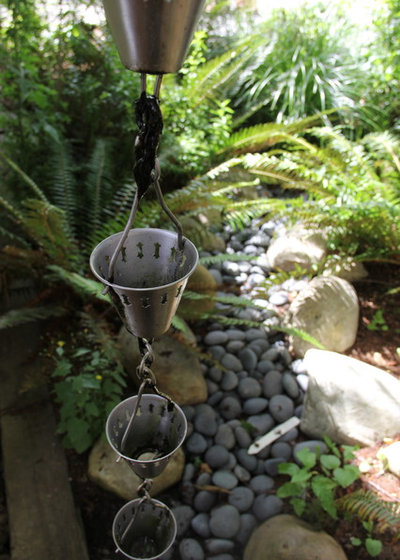
microhouse
Incorporating Style Disconnecting roof downspouts keeps clean roof runoff out of the sewer system. Rain chains both manage and celebrate rainfall and provide visual interest, even during periods of light rain. Here, a rock-lined channel moves the water from the house to the rain garden.
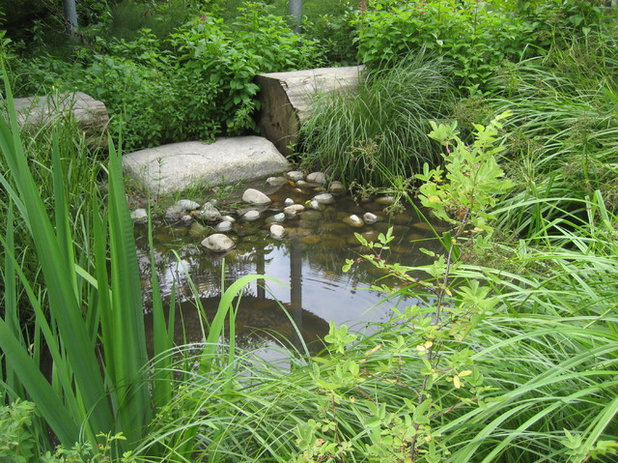
microhouse
Rain gardens are a great way to soften a formal landscape or to provide a transition from formal to natural areas of the landscape. Choose plants that enhance your backyard and create a cohesive look.
Do you have a rain garden? We'd love to see it. Please post a photo below!
More:See architecture designs that save rain
More guides to landscape design





